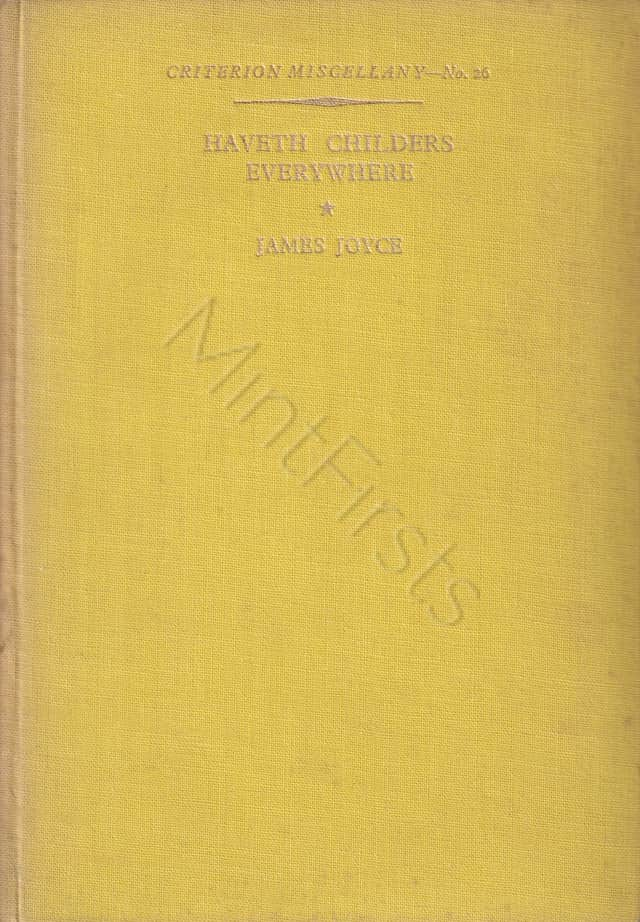Established
2004
Relaunched
2024
Our booksHow we tradeAbout usCredits & thanksYour account
- Home page
- Our books
- How we trade
- About us
- Credits & thanks
- Your account
- Your cart
MENU
Haveth Childers Everywhere. Fragment of Work in Progress.
First UK edition of James Joyce's Haveth Childers Everywhere

James Joyce ⦗James Augustine Aloysius Joyce, 1882–1941⦘
First UK edition. Thin 8vo. Pp. [1]-36. Yellow cloth, lettered in gilt to spine and front. Fore and bottom edges untrimmed. Issued as Criterion Miscellany No. 26. Originally published as a limited edition in June 1930 by Babou and Kahane in Paris and The Fountain Press in the U.S. The scarce clothbound issue, one of an unspecified number of copies, published May 8, 1931; the rest of the edition was issued in sewn paper wrappers. In 1948, Faber reported that it had sold only 249 copies of the cloth edition, and 5341 copies of the soft-cover.
Lacking the plain tissue dust jacket. Yellow cloth very slightly spotted with light spine fading and free end-papers faintly browned, otherwise a very nice internally clean, bright copy.
Fragment of Work in Progress, forming pp.532–554 of Finnegans Wake, as the text stood in June of 1930. Reviewing the book in the New Statesman, G. W. Stonier, whilst calling Joyce "one of the very few great writers of our time" who deserved "not a little admiration", confessed that Haveth Childers Everywhere was "to [him] at least, almost completely unintelligible." A sentiment shared by the New York Times's Herbert Matthews, who admitted that "after an honest and patient effort, backed by a previous reading of all of Mr. Joyce's work", he found the author's "attempt to enrich and refashion the English language . . . absolutely incomprehensible".
To which Joyce's advice to William Bird (1888–1963), the American journalist and publisher of Three Mountains Press in Paris during the 1920s, might serve as an apt riposte: "It's all so simple. If anyone doesn't understand a passage, all he need do is read it aloud." Even while taking heed of Joyce's subsequent warning that he "put in so many enigmas and puzzles that it will keep the professors busy for centuries arguing over what [he] meant", his instruction above sounds true. Comprehension is much aided if read aloud, especially in an Irish accent.
[Slocum and Cahoon A42]
edition
first UK
format
hardback
scarcity
scarce
publisher
Faber and Faber
published in
London
publication year
1931
ISBN
not assigned
height × width
19.5 × 13.5 cm
genre
literary fiction
language
English
binding style
cloth
binding state
original binding
remark
missing jacket
condition
near fine
GBP£ 260
EUR€ 297
USD$ 350
ref.777 9U7